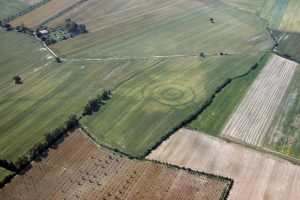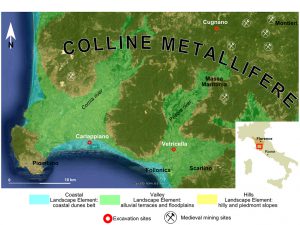
The archaeological site of Vetricella (Scarlino,GR) is located in the center of the coastal lowland crossed by the Pecora river, at the foot of the castle of Scarlino, an area that has been subject of intensive archaeological researches already for many decades. Specifically, the context of Vetricella has been discovered in 2005 by aerial archaeology survey, when was possible to recognize its exceptional triple concentric cropmark (Fig.1). The first archaeological investigations were carried out from 2007 to 2012, as initial exploration of this unusual lowland site, and they started again in 2016 with the new project “nEU-Med”. The last seasons of excavation has confirmed definitely the historical relevance of this site, proved by rich archaeological record and by material indicators of various economic and productive activities, datable at least from the 9th century (Fig.2-4-5-6). The new research was structured from the beginning with a strategy of maximum multidisciplinarity, motivated both from the variety of material finds (numismatic, ceramic and glassy finds, besides numerous archaeometallurgical, archaeozoological and archaeobotanic findings) and from the hold relationship that this site shows to have with the morphology of the surrounding lagoon landscape.

Exactly the understanding of the relationship between the natural landscape and the function of the site of Vetricella will be the focus of the future research, to reconstruct more detail the relationships of the site with the exploitation of the natural resources of this particular territorial context (junction point between the sea and the Colline Metallifere/Metal-beraing Hills) (Fig.3).


